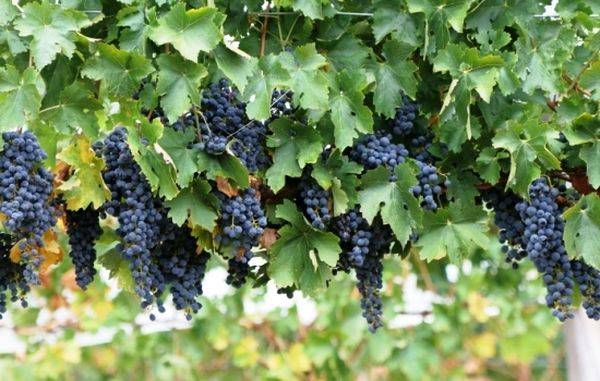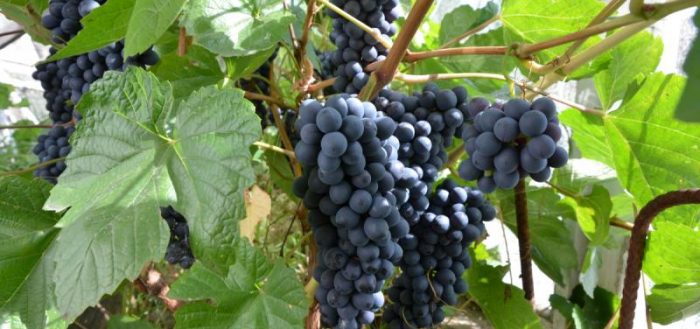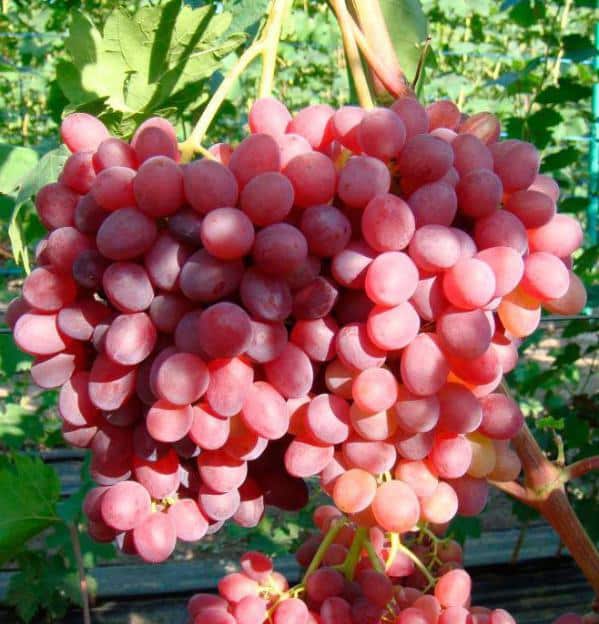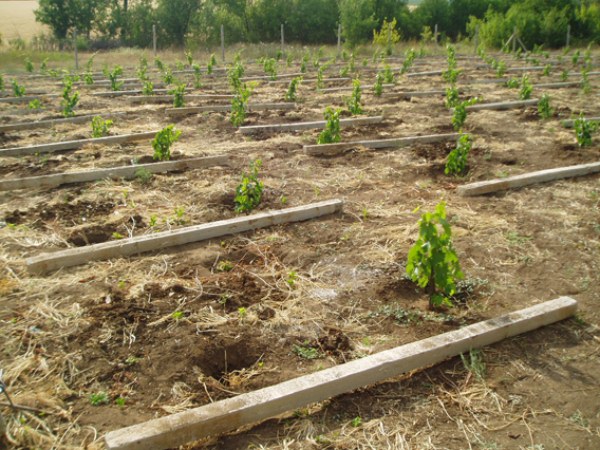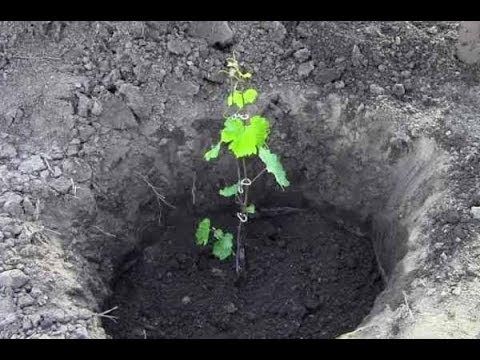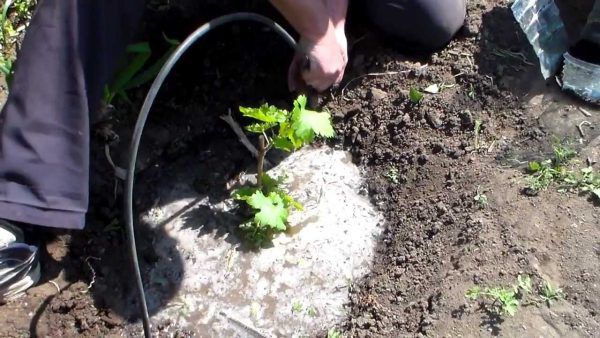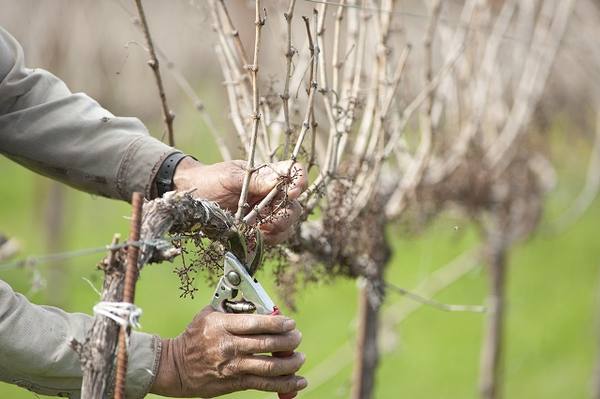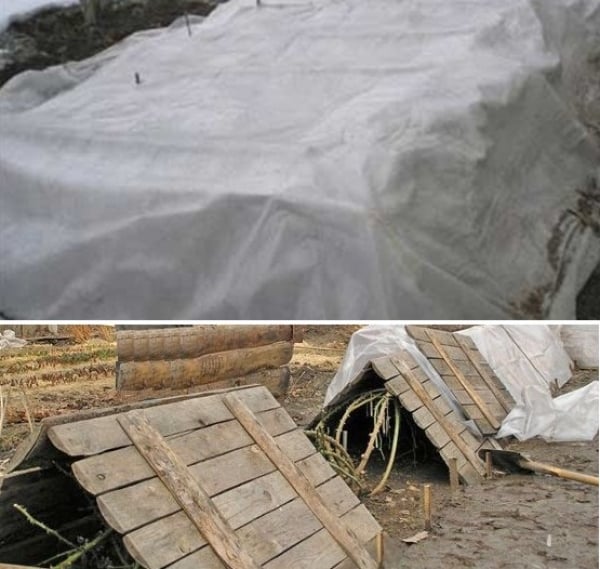Grapes are considered a heat-loving plant that requires a lot of sunlight for cultivation. It is difficult to grow the plant in cold areas. But, thanks to recent research, they have found frost-resistant grape varieties, which tolerate temperature changes and can grow even in Siberia. With sufficient care, the right choice of varieties, and compliance with cultivation technologies, you can collect sweet and sour berries even in the Siberian region.
Features of growing grapes in Siberia
Gardeners and agricultural technicians became interested in the specifics of grape cultivation in the Siberian region several decades ago, but they faced the following problems:
- the grapes froze;
- after removing the shelters, sharp frosts occurred, which destroyed the entire crop;
- early cold weather led to the death of seedlings.
But based on the research of Nedin V.K. and amateur gardeners from Biysk, who were the first to harvest grapes, not only began to grow grape bushes, but also learned to cultivate them. Thanks to this, 2 systems for successful cultivation of crops have been prepared, which are suitable even for beginner gardeners and will help harvest grapes.
Features of cultivating culture: system one
To grow grapes according to this system, you need:
- Leave the harvested seedlings for winter storage in frost-resistant rooms or bury them in deep trenches 1 meter deep.
- Graft early grape varieties onto winter-hardy varieties of American or Amur culture.
- Make planting holes deep enough to protect the roots from freezing.
- Tie up seedlings after spring frosts. In severe cold weather, cover the plants with film.
- In the summer season, trim and tie up the crop as little as possible.
- There is no need to additionally spray and feed the crop, since there are practically no grape pests in the region. All you need to do is weed and mow the grass.
- Pruning is carried out in two stages, placing stress on the eyes and shoots, first - before September, then - before opening for the winter.
Peculiarities of crop breeding: system two
The plant can be grown in another way. For this:
- There is no need to graft the plant onto frost-resistant varieties. It is enough to prepare cuttings in the fall, which are put into the cellar or stored, wrapped together with the “mother” bush.
- When planting seedlings in open black soil, it is not necessary to make planting holes with bait.
Sandy and clay soil require fertilizers and planting holes for the plant.
- The crop must grow in “harsh” conditions without additional care other than weeding.
- For the winter season, cover the grapes with soil and cover them in shallow trenches.
- Trim the plant once a year - in the last ten days of October.
Using one of the proposed technologies, you can achieve an abundant harvest of delicious fruits.
Specifics of regions
To grow grapes in Siberia, you must also take into account that the region is divided into 12 districts. Each of these regions has its own characteristics of growing shrubs. For convenience, Siberia is conventionally divided into 3 parts, with the same climatic conditions:
- western territory - with a mild climate and temperatures from -15 to -30 degrees;
- the eastern part has a sharply continental climate and an average temperature of about 0 degrees;
- northern district - with short summers and constantly low temperatures.
Based on this, it is most convenient to grow grapes in the western part, while early ripening varieties are best grown in the eastern regions. And in order to get a large harvest, you need to look for varieties specially developed for a given area.
How to choose the right grape variety?
For the Siberian region, you need to select only winter-hardy varieties, since the fruits will have to endure temperature changes of up to -40 degrees. Therefore, the best grape varieties for cold regions are:
- Alpha.
- Siberian cherry.
- Thumbelina.
- Dombovskaya.
- Delight.
- Muscat.
- Tukay.
The most popular type in Siberia is the Dombovskaya grape variety with small berries, early harvest and high resistance to frost.
At the same time, it is possible to grow frost-resistant southern varieties in the region, additionally covering the plants for the winter. The famous Isabella and Lydia are also suitable for cultivation in frosty areas, but the berries are used mainly for wine.
An important condition is the period of fruit ripening:
- early varieties ripen in 115-125 days;
- very early crops grow in 105-115 days;
- very early plants grow up to 105 days.
Boarding procedure
After the variety of seedlings has been selected, you need to decide on the place where to plant the plants correctly. Bushes are grown in illuminated, dry areas, protected from northern and northeastern winds.
It is better to place seedlings along walls or fences that will protect the crop from the wind. The distance between bushes should be more than 2.5 meters, and between rows - 2 meters, since the rhizomes grow quickly.
There are two ways to plant a crop:
- In planting holes (diameter - 0.5 meters, depth - 0.6-0.7 meters).
- In prepared trenches 60-80 centimeters deep and about 0.5 meters wide. In this case, the length of the trench depends on the number of bushes.
The landing process is as follows:
- fill the bottom of the landing site with gravel, broken bricks, and expanded clay;
- Fertile soil mixed with natural fertilizers or compost is laid on top;
- then chemical additives are added, consisting of 500 milligrams of superphosphate and 20 milligrams of potassium;
- the layers alternate until the trench or hole is completely filled.
To cultivate shrubs, you also need to properly prepare the seedlings.For propagation, you can choose vegetative seedlings grown at home in plastic cups. Or take harvested plants that have overwintered for one season in storage.
- cut rhizomes to 10-12 centimeters;
- leave only the strongest branches on the seedling. Trim the vines to 2 eyes;
- soak the seedlings in a solution of warm water with heteroaunsin or sodium humate;
- Place the trees in a clay mash.
After this, you can proceed directly to planting the plant. Planting is carried out in the spring - from mid-April to May. During this period, the soils are already warming up well, allowing the crop to firmly establish itself.
- Spread the rhizomes of the seedling and deepen it into the soil layer.
- Fill the holes with soil, leaving 10-12 centimeters to the top of the hole.
- Water the plant with two buckets of water.
In the first week after planting, water the seedlings at least once every three days.
Grape care
Features of grape care in Siberia include:
- Timely watering. You need to start caring for the crop immediately after planting. Water the plants 4-5 times a season.
The need for moisture is determined by the appearance of the leaves - they lose their elasticity and sag. To water, make a small ditch at a distance of 30 centimeters from the crop, pour a bucket of water heated in the sun into the hole. Afterwards, fill the ditch and mulch it. Abundant watering is especially important for the plant:
- after the buds open;
- 14 days before flowering begins;
- 2 weeks after flowering;
- before sheltering for the winter.
To keep the soil constantly moist and loose, you can use mulch.
- Formation of bushes, garter and thinning.Bushes need to be formed from the first year of the plant’s life, tying seedlings to stakes up to 1.5 meters high. Pinch out the stepsons, starting with the second leaf. Agricultural technology for grapes also includes the correct load on the bush of buds - future clusters.
In the first year, no more than 20 pieces of future ovaries are left. The following summer, increase the number of eyes to 40 per bush. In the third year, you can triple the load to 60 eyes. An adult plant is loaded with 80-150 eyes, depending on the variety and growth of the bush.
- Providing heat using trellises made of metal, wooden poles and wire stretched between them.
- Covering for the winter.
- Feeding. A crop planted in a hole fertilized with humus does not require fertilizer for three years. And only in the fourth season the plant is fertilized with organic or mineral fertilizers no more than once a year.
Pests and diseases have not reached Siberia, so there is no need to additionally spray and treat the plants.
Trimming Features
When growing crops, it is very important to take into account timely pruning of the plant. The process differs from the “southern technology”, since in Siberia circumcision is carried out in two steps. As a first step, gardeners advise pruning the plants of the first and second years, so at this time the vine is formed. Pruning is done in September, removing dry, damaged, weakened shoots. Then the vine that did not bear fruit is cut off.
It is not recommended to prune the plant in the spring season, as the crop blooms during this period.
The second pruning is carried out as late as possible - before wintering the shrub, in order to give the tree the opportunity to absorb the necessary substances from the soil.
Hardening of grapes
The main feature of Siberian grape agricultural technology is the hardening of the plant. Therefore, there is no need to create greenhouse conditions for the crop. The only exception is severe frosts and gusts of wind. Only in these cases can you cover the bushes with film for a while, and then immediately open them.
The plant hardening process itself is aimed at:
- rapid acclimatization of varieties;
- resistance to changes in daily and seasonal temperatures;
- successful wintering of the crop.
If you do not harden the bush, the plant simply will not be able to withstand the harsh Siberian winter and will die.
Covering for the winter
Siberian winters are characterized by severity and low temperatures, reaching -50 degrees. Therefore, preparing the plant for winter is one of the primary tasks when growing bushes. They begin to prepare the grapes for the cold when the average daily temperature becomes 0 degrees. This happens at the end of autumn - in October, November. The sun's rays no longer warm the soil enough. Thanks to this, timely shelter will not only preserve the harvest, but will also not lead to soil rotting.
Today, gardeners have developed several successful methods how to cover grape bushes for the winter:
- Cover the bushes with a layer of soil of at least 20 centimeters. The downside is that the buds rot underground.
- Cover the crop with sawdust, husks, straw, and pine needles.
- Prepare wooden decks in the form of triangles, which should be installed above the bush.
- Wrap the bushes with building materials: linoleum, roofing felt, insulation, drywall.


